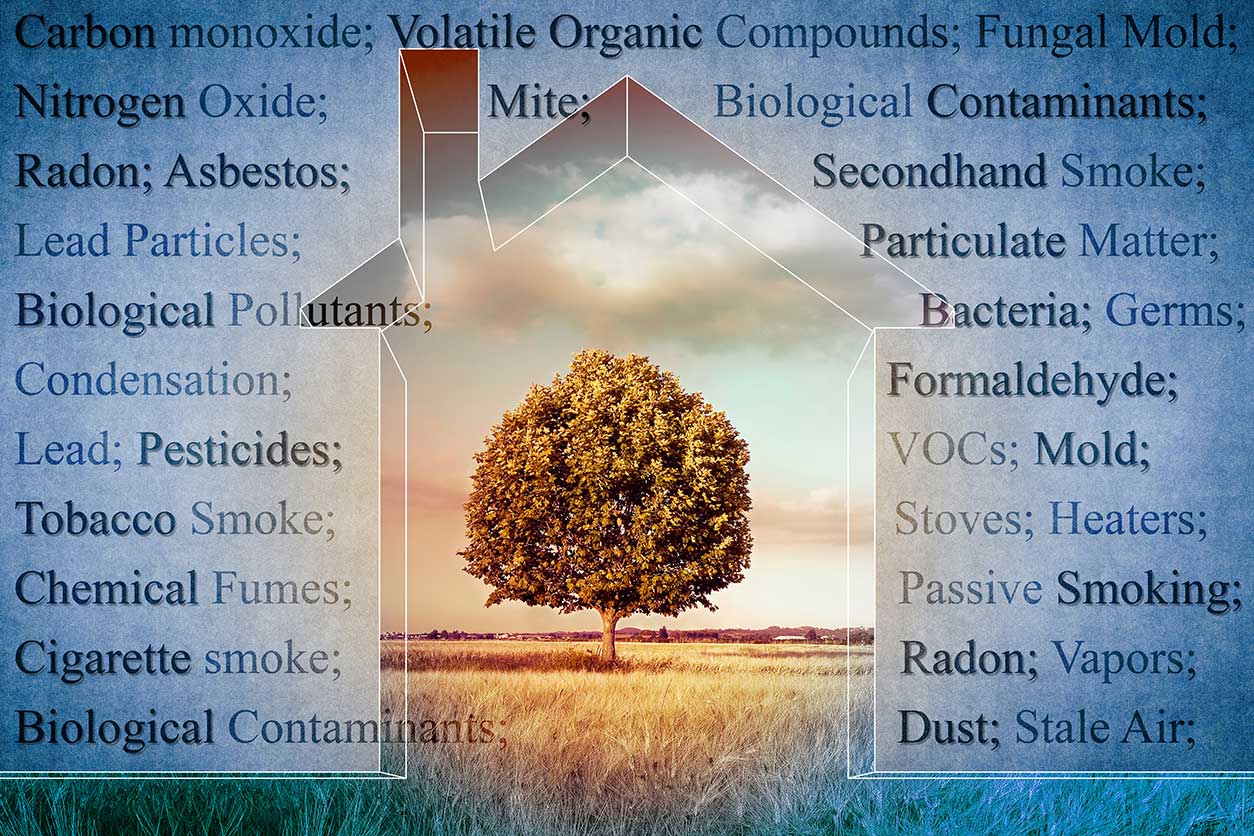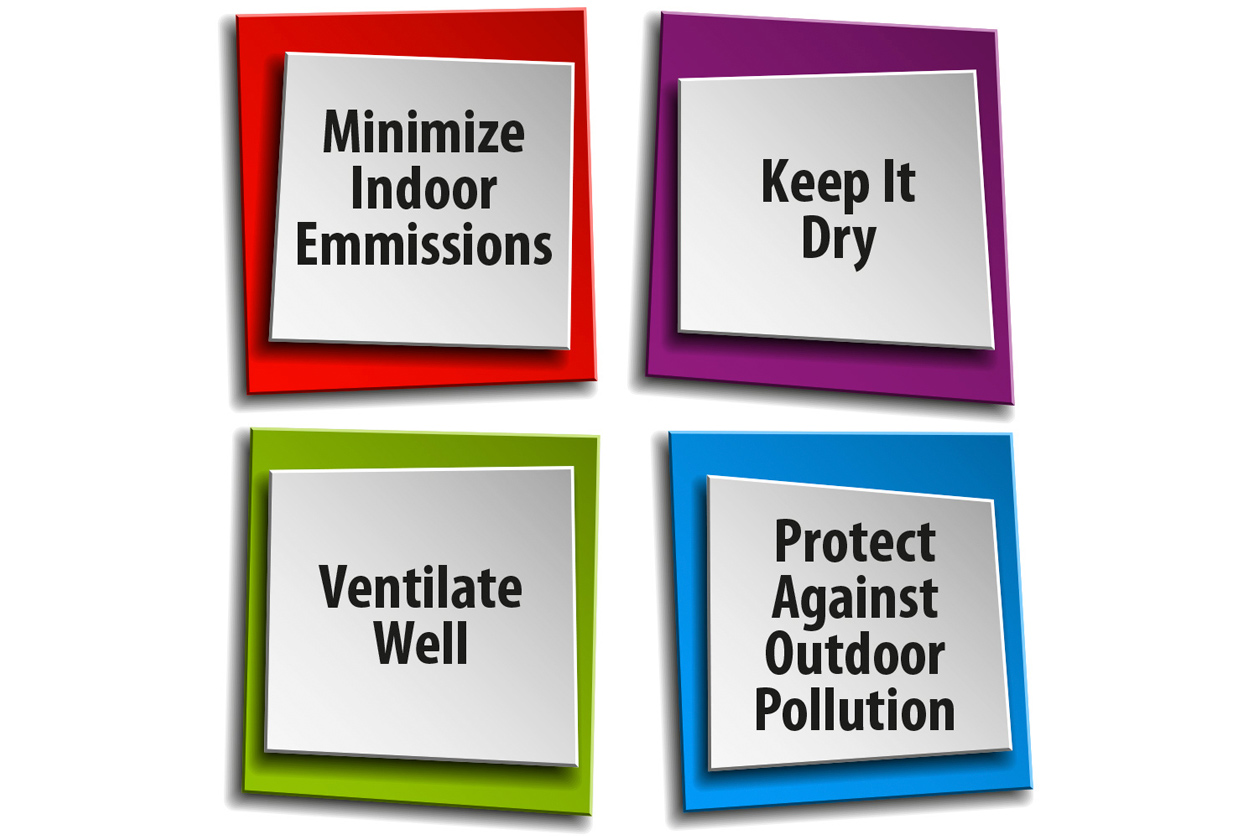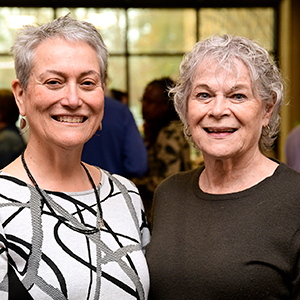The air inside the buildings where we live, work, shop, and play is a complex mixture of particles, microbes, and chemicals. These components, which join the gases commonly present in air, enter from the outside and are released by furnishings and activities. Studying the health effects of these substances and their interactions presents a host of challenges (see sidebar).
Accordingly, a committee established by the National Academies of Science, Engineering, and Medicine (NASEM) invited experts to a public information gathering session on April 5. The committee, co-sponsored by NIEHS, will continue to meet in closed sessions throughout the year.
 Furnishings, personal care products, cooking, heating, and hobbies are some of the sources of chemicals commonly detected in indoor air. (Photo courtesy of Francesco Scatena / Shutterstock.com)
Furnishings, personal care products, cooking, heating, and hobbies are some of the sources of chemicals commonly detected in indoor air. (Photo courtesy of Francesco Scatena / Shutterstock.com)Data on indoor air scarce, complex
Air pollution is a major contributor to premature mortality, William Nazaroff, Ph.D., professor emeritus at the University of California (UC), Berkeley, reminded the attendees. Yet even though most Americans spend the bulk of their time indoors, most available data concerns outdoor air.
 Bennett’s study detected 257 compounds in the house dust samples they screened. Of them, 135 had not previously been detected in indoor studies. (Photo courtesy of Deborah Bennett)
Bennett’s study detected 257 compounds in the house dust samples they screened. Of them, 135 had not previously been detected in indoor studies. (Photo courtesy of Deborah Bennett)Time indoors has been intensified since the COVID-19 outbreak. “The pandemic helped us get here,” said William Bahnfleth, Ph.D., from Pennsylvania State University. “This is the moment [for us] to say what is needed.”
One approach to determining what is needed is the study of house dust, because many compounds accumulate in dust. Substances as diverse as plasticizers, fungicides, pharmaceuticals, food additives, cosmetic ingredients, and human metabolites were detected in samples from just 38 homes in Northern California, in a study shared by Deborah Bennett, Ph.D., from UC Davis.
Frank Wania, Ph.D., from the University of Toronto, described the sources and processes that generate these compounds.
- Deliberately released, such as air fresheners, perfumes, disinfectants.
- Inadvertently released from products, furnishings, building materials.
- Inadvertently released during human activities like cleaning, cooking, smoking.
- Imported from outside.
- Produced when other compounds react.
Connection to health disparities
Home environments make important contributions to observed health disparities, according to Gary Adamkiewicz, Ph.D., from Harvard University. Citing a paper he published in 2011, Adamkiewicz considered factors that influence residential air quality:
 Adamkiewicz stressed the importance of taking a multilevel view of indoor air, from household to building to neighborhood. (Photo courtesy of Gary Adamkiewicz)
Adamkiewicz stressed the importance of taking a multilevel view of indoor air, from household to building to neighborhood. (Photo courtesy of Gary Adamkiewicz)- Physical structure — size, age, single homes versus multifamily homes, heating systems, ventilation.
- Setting of the structure — traffic, nearby industry, residential activity such as lawn care, contaminated soil.
- Behavior — cooking practices, smoking, use of consumer and personal care products.
- Sources — furnishings, pesticides, water sources, cleaning products, air fresheners.
He advised looking at subgroups — such as elderly people, urban residents versus rural residents, public housing tenants, and environmental justice communities — to better understand how these factors influence disparities. “We need a mechanistic, systems view of exposure disparities,” he said, noting that such an approach helps target activities or conditions that can be changed.
Diverse challenges
“Marketing has obscured what we know scientifically,” said Nazaroff, using air purifiers as an example. “Scientifically, there’s no pure air [because] air is a mixture,” he pointed out. “So nothing can satisfy that name. But practically, adding chemicals to indoor air to improve air quality is almost universally a bad idea.” Instead, he advised treating contaminants.
The committee, led by David Dorman, D.V.M., Ph.D., from North Carolina State University, will grapple with this and other challenges over the coming year. Next year, NASEM will produce a report that describes:
- Key implications of the research, including near-term opportunities for incorporating what is known into practice.
- Where additional chemistry research is most critical for understanding indoor air and adverse exposures.
 Nazaroff described four principles of keeping indoor air healthy. (Image courtesy of NIEHS)
Nazaroff described four principles of keeping indoor air healthy. (Image courtesy of NIEHS)Citations:
Adamkiewicz G, Zota AR, Fabian MP, Chahine T, Julien R, Spengler JD, Levy JI. 2011. Moving environmental justice indoors: understanding structural influences on residential exposure patterns in low-income communities. Am J Public Health 101(Suppl 1):S238−245.
Shin HM, Moschet C, Young TM, Bennett DH. 2020. Measured concentrations of consumer product chemicals in California house dust: implications for sources, exposure, and toxicity potential. Indoor Air. 30(1):60–75.









